- News
- Reviews
- Bikes
- Components
- Bar tape & grips
- Bottom brackets
- Brake & gear cables
- Brake & STI levers
- Brake pads & spares
- Brakes
- Cassettes & freewheels
- Chains
- Chainsets & chainrings
- Derailleurs - front
- Derailleurs - rear
- Forks
- Gear levers & shifters
- Groupsets
- Handlebars & extensions
- Headsets
- Hubs
- Inner tubes
- Pedals
- Quick releases & skewers
- Saddles
- Seatposts
- Stems
- Wheels
- Tyres
- Tubeless valves
- Accessories
- Accessories - misc
- Computer mounts
- Bags
- Bar ends
- Bike bags & cases
- Bottle cages
- Bottles
- Cameras
- Car racks
- Child seats
- Computers
- Glasses
- GPS units
- Helmets
- Lights - front
- Lights - rear
- Lights - sets
- Locks
- Mirrors
- Mudguards
- Racks
- Pumps & CO2 inflators
- Puncture kits
- Reflectives
- Smart watches
- Stands and racks
- Trailers
- Clothing
- Health, fitness and nutrition
- Tools and workshop
- Miscellaneous
- Buyers Guides
- Features
- Forum
- Recommends
- Podcast
review
£500.00
VERDICT:
Very well-priced power meter that's easy to swap between bikes
Weight:
417g
Contact:
At road.cc every product is thoroughly tested for as long as it takes to get a proper insight into how well it works. Our reviewers are experienced cyclists that we trust to be objective. While we strive to ensure that opinions expressed are backed up by facts, reviews are by their nature an informed opinion, not a definitive verdict. We don't intentionally try to break anything (except locks) but we do try to look for weak points in any design. The overall score is not just an average of the other scores: it reflects both a product's function and value – with value determined by how a product compares with items of similar spec, quality, and price.
What the road.cc scores meanGood scores are more common than bad, because fortunately good products are more common than bad.
- Exceptional
- Excellent
- Very Good
- Good
- Quite good
- Average
- Not so good
- Poor
- Bad
- Appalling
PowerTap P1S pedals are the single-sided version of the popular PowerTap P1 power meter pedals. They're easy to set up and to swap between bikes and if you're not bothered about measuring power from both legs, they're well worth a look.
The big advantage of measuring power at the pedals is supposed to be that pedals are easy to swap between bikes. However, only the PowerTap P1 pedals have really delivered on that promise. Garmin's Vector 2 pedals and Look's similar Keo Power pedals require you to faff with their external electronics pods, while the intriguing Favero Assioma pedals only started shipping at the beginning of August, so it's too early to tell how well they work.
> Find your nearest dealer here
The PowerTap P1S pedals are a single-sided version of the PowerTap P1 pedals that Dave Arthur reviewed a couple of years ago.
That means that only the left pedal contains the necessary strain gauges and electronic gubbins to measure your power, and it simply doubles the reading to work out your power.
Superficially that sounds like a bad idea, but other single-sided power meters such as Stages and 4iiii produce good, useful data, at considerably less than the cost of a double-sided system.
And this is what we find with the PowerTap P1S. You can pick up a set for £440 against about £800 for the double-sided version. That makes the PowerTap P1S pedals a very cost-effective way of getting started with training with power. There are slightly cheaper systems, but none of them offer the PowerTap P1S's full range of features:
- Easy switching between bikes
- Compatibility with any bike, regardless of transmission manufacturer
- Compatibility with a wide range of head units
- Both Bluetooth and ANT+ communication protocols
The important question here, then, is does it matter that you only get power readings from one leg?
The short answer is: no.
I fitted the PowerTap P1S pedals to a bike mounted in a CycleOps Hammer direct drive trainer. Power readings from the P1S closely tracked the readings from the Hammer, though they were consistently slightly higher.
That's to be expected. The closer to your legs that you measure power, the higher the reading, because power is lost in flexing the cranks and in friction in the chain. None of these losses are large (unless your chain is very dirty) but power meters are sufficiently sensitive to detect the few watts we're talking about.
Using a double-sided power meter indicates I have a slight difference in power between left and right legs too, and my left leg is the stronger one. That's the leg the P1S is measuring, so that accounts for some of the difference in power readings between the pedal and the Hammer trainer.
Does that matter? Not really. As long as the P1S is consistently accurate from one ride to the next, then it's not a big deal that it's over- or under-reading by a per cent or two. Us regular punters are going to use a power meter to make the most of our training time. We're going to measure our functional threshold power in one of those 20-minute torture sessions coaches are so fond of, then tailor our training accordingly.
You can do that just as well if your power measurement is out by a couple of per cent as if it's bang on, as long as it's consistently out. The P1S is. In several tests on the trainer and on the road, it's read slightly higher than a crank power meter or measurement at the turbo.
Now, if you're going up against Chris Froome, it's a different story. You need accurate power measurement because you have a target: Froome's 6.25 watts/kg power-to-weight ratio. If you think you're generating 6.3 watts/kg, but you're actually only putting out 6.1 watts/kg, you're in for a nasty surprise on l'Alpe d'Huez.
The increased accuracy of the very best double-sided power meters is therefore a must-have for elite riders. For the rest of us, not so much.
Aside from that, everything that David Arthur had to say about the double-sided P1 pedals applies to the P1S. They're well made, easy to set up and use, and very easy to switch between bikes.
I did have to update to the latest firmware after unboxing the PowerTap P1Ses, but that's very easy with the free CycleOps Virtual Training iPhone app, which you can also use to set the zero offset before a ride.
The only significant gripe is that PowerTap is very cagey about compatibility with Look Keo cleats. Lots of people (including our Davey) have found that you can use Keo cleats with PowerTap pedals. However, PowerTap strongly recommends that you use the supplied PowerTap cleats, and replace them with the same when they wear out.
PowerTap cleats are available with either six degrees of float (the red cleats) or none, in black. They can be found for about £18 a pair whereas a small amount of clicking around will find Look Keo cleats for under a tenner.
If you've got several pairs of shoes, you'll need to budget for some extra cleats.
> Buyer's Guide: Your power measuring options
The only thing that would make me hesitate about dropping £440 on a PowerTap P1S right now is the Garmin Vector 3. In the latest version of its power-measuring pedals, Garmin has incorporated the electronics into the pedal body; the pods of the Vector 1 and 2 are no more. The Vector 3 also supports Bluetooth, softening Garmin's previous singular devotion to its ANT+ protocol.
The Vector 3 has caught up with the PowerTap P1's advantages, then. The decision will then come down to price (a Vector 3S is £500, and is lighter and arguably tidier than the P1S), and whether you're prepared to go through the waiting-for-a-firmware-update rigmarole that goes with any new cycling electronics.
The PowerTap P1S pedals work extremely well with the latest firmware. If you want a sensibly priced power meter that can be easily swapped between bikes, and you want it right now, the PowerTap P1S pedals deserve your very serious consideration.
Verdict
Very well-priced power meter that's easy to swap between bikes
road.cc test report
Make and model: PowerTap P1S Power Meter Pedals
Size tested: One
Tell us what the product is for, and who it's aimed at. What do the manufacturers say about it? How does that compare to your own feelings about it?
PowerTap says:
Single-sided measurement.
An affordable way to measure power at the pedals.
Doubles left pedal measurement to calculate total power.
Easily swap between bikes for a vast range of compatibility.
BRINGING POWER TO THE PEDALS FOR THE PEOPLE
Built to be just as robust and just as precise as its world-renowned sibling, the PowerTap Single-Sided Pedal has all the innovation of the P1 pedals – at a fraction of the price. Named for its single-sided nature, the PowerTap Single-Sided Pedal doubles the watts produced by the left pedal to calculate total power. The PowerTap Single-Sided Pedal also touts the same plug-and-play installation, easy-to-swap, cross-bike compatibility, along with dual-band ANT+ and Bluetooth as its bi-lateral counterpart.
Ideal for the bike enthusiast, the weekend warrior or the power-training curious, there is no better way to get started with accurate pedal-based power than the PowerTap Single-Sided Pedal.
Tell us some more about the technical aspects of the product?
Full specs:
Weight: 390 grams per pair of pedals (without batteries)
Thread Type: 9/16"
Cleat Interface: 3 bolt
Cleat: Red, 6 degree floating
Spring Type: Adjustable Elastomer
Proven PowerTap accuracy
Release Tension: 6-20 Nm
Stack Height: 14mm
Center of Pedal: 53mm (measured from crank to pedal)
Lean Angle: 25.5 degrees (based on 175mm crank length, 75mm BB drop and 147mm Q-Factor crank)
Firmware Updates: Over the air
Connectivity: ANT+ and Bluetooth SMART
Battery: AAA Lithium (alkaline and/or rechargeable alkaline batteries not recommended for extended use)
Battery Life: 60 hours
No weight limit
PowerTap Single-Sided Pedals are not capable of providing advanced pedal metric data. In order to display advanced pedal metric data you must be using dual sided P1 pedals.
Rate the product for quality of construction:
8/10
Fit and finish is very tidy.
Rate the product for performance:
8/10
Easy to pair with Garmin head units and with the PowerTap app on an iPhone. Consistent power readings with no odd spikes or drop-outs.
Rate the product for durability:
8/10
Rate the product for weight (if applicable)
7/10
They're not the lightest pedals, thanks to having all the electronics contained in the body, plus an AAA battery, but the weight disadvantage is well worth it for the function.
Rate the product for value:
8/10
This is currently one of the cheapest ways to get into training with power. Take into account the ease of swapping between bikes, reliability and PowerTap's track record in the sector and they're very very good value.
Tell us how the product performed overall when used for its designed purpose
Very well; provides consistent power readings with no unusual behaviour.
Tell us what you particularly liked about the product
Ease of use: fit the pedals, set the zero offset, and away you go.
Tell us what you particularly disliked about the product
Having to get used to single-sided pedals after years of using Speedplays.
Did you enjoy using the product? Yes
Would you consider buying the product? Yes
Would you recommend the product to a friend? Yes
Use this box to explain your score
I'm tempted to give the PowerTap P1S pedals an extra half a point over the dual-sided P1 pedals because they're only a little over half the price, but I'm going to agree with David Arthur and give them four stars because they're very good, but I suspect the Garmin Vector 3 and Favero Assioma pedals are going to put them under serious pressure for weight, features and price.
About the tester
Age: 48
I usually ride: Scapin Style My best bike is:
I've been riding for: Over 20 years I ride: Most days I would class myself as: Expert
I regularly do the following types of riding: commuting, touring, club rides, general fitness riding, mountain biking
John has been writing about bikes and cycling for over 30 years since discovering that people were mug enough to pay him for it rather than expecting him to do an honest day's work.
He was heavily involved in the mountain bike boom of the late 1980s as a racer, team manager and race promoter, and that led to writing for Mountain Biking UK magazine shortly after its inception. He got the gig by phoning up the editor and telling him the magazine was rubbish and he could do better. Rather than telling him to get lost, MBUK editor Tym Manley called John’s bluff and the rest is history.
Since then he has worked on MTB Pro magazine and was editor of Maximum Mountain Bike and Australian Mountain Bike magazines, before switching to the web in 2000 to work for CyclingNews.com. Along with road.cc founder Tony Farrelly, John was on the launch team for BikeRadar.com and subsequently became editor in chief of Future Publishing’s group of cycling magazines and websites, including Cycling Plus, MBUK, What Mountain Bike and Procycling.
John has also written for Cyclist magazine, edited the BikeMagic website and was founding editor of TotalWomensCycling.com before handing over to someone far more representative of the site's main audience.
He joined road.cc in 2013. He lives in Cambridge where the lack of hills is more than made up for by the headwinds.
Latest Comments
- bluezurich 38 min 2 sec ago
I watched it all on Tiz for free with no ads.
- David9694 5 hours 48 min ago
+1 on saddle height and also check your lateral alignment - everything should be straight and aligned. My bike fit years ago moved my feet to the...
- froze 5 hours 53 min ago
Everything Lezyne sells are really good, especially their pumps, and the Torque Drive. ...
- wtjs 6 hours 36 min ago
It's not only the UK which suffers from vile louts-VdP is a great athlete who deserves respect!
- Hirsute 7 hours 12 min ago
https://www.youtube.com/watch?v=wOzP87HVCWw
- Rendel Harris 8 hours 38 min ago
Apart from the fact that you're completely wrong - Decathlon is a French company and has 1045 stores in Europe compared to 50 in the UK - whilst...
- hawkinspeter 10 hours 44 min ago
Finally tried out the Smart Lever that I did get for Xmas as I had a suspicious looking bubble/bump on my rear GoodYear tyre (don't think I'll buy...
- pockstone 11 hours 10 min ago
Suitable reply, No Reply.
- chrisonabike 13 hours 47 min ago
Further motoring exemptions have been highlighted by a certain celebrity lawyer: needing the loo, being a well-known footballer...


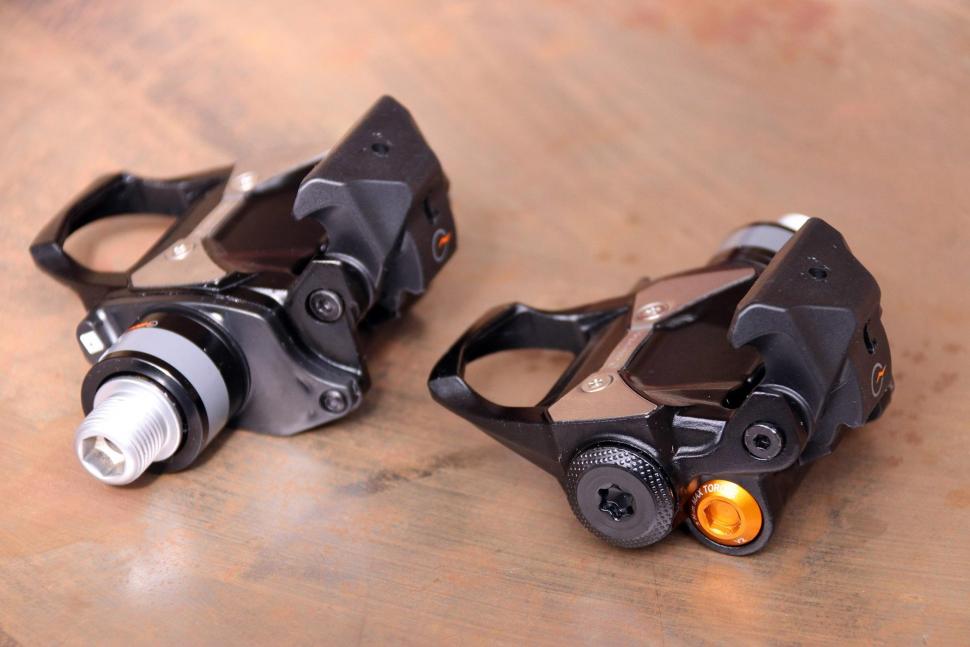
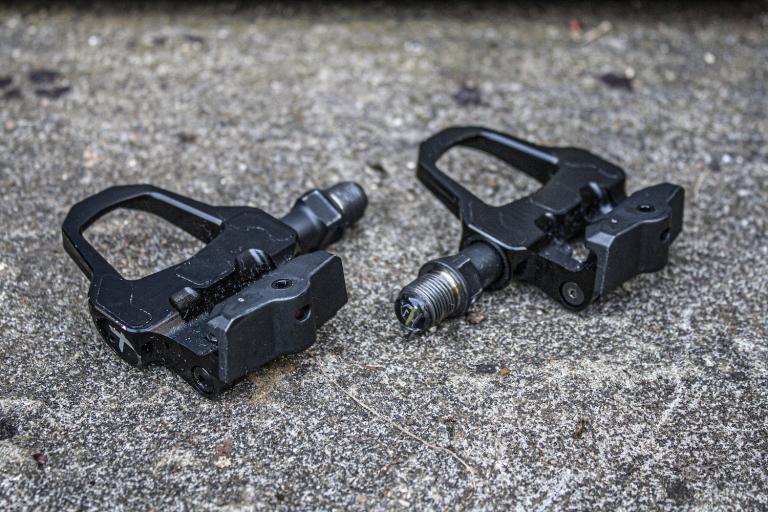
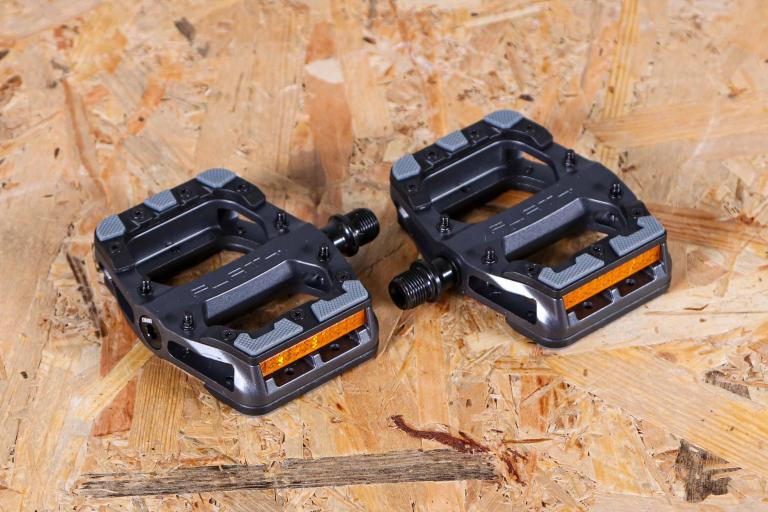
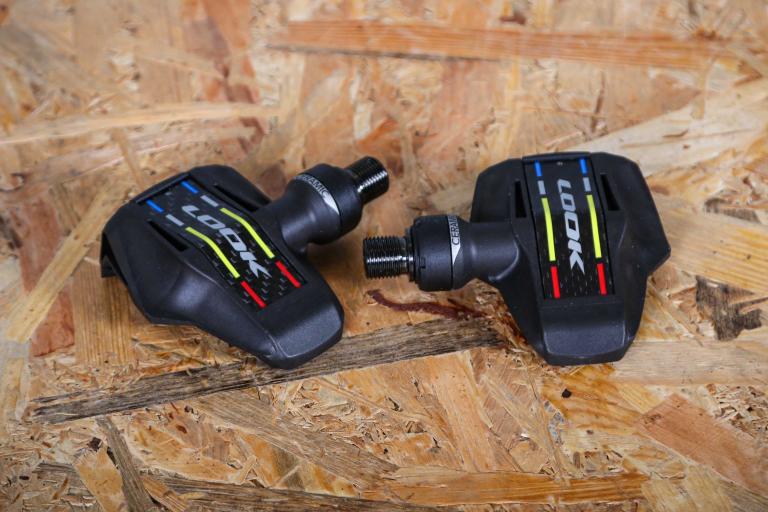
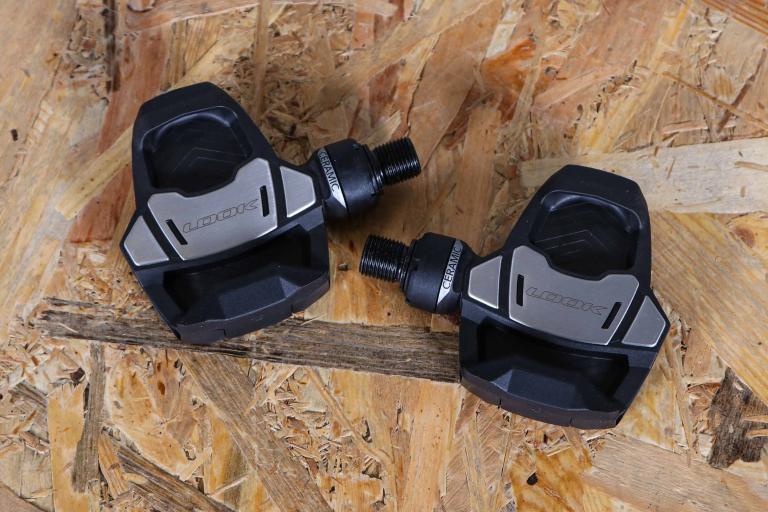
Add new comment
13 comments
I used the dual sided P1 pedals for about 18 months. There are many things to like about them, but they also have their problems.
I bought them after having significant battery issues with a couple of Stages units and their warranty replacements.
The P1 pedals' electronics were a big improvement on the Stages. Through out the 18 months I owned them they were always reliable. Having dual sided measurements was a revelation as it showed I had a significant L-R imbalance when seated which became perfectly balanced when out of the saddle. This has convinced me that making do with a one sided PM is a complete waste of time; you need to at least measure your whole power output as the inbalance is a dynamic thing which changes with output, fatigue and position.
The ease with which the P1s can be transferred from bike to bike is unparalleled; you just screw them in, calibrate and ride.
They are tough. I had a significant crash while using them which involved sliding across the road and the loss of some metal from the right hand pedal, but it kept working just fine. However, that toughness comes at the expense of being quite weighty units.
Now the not so good stuff.
My first pair developed play in the bearings within 3 months. They were replaced under warranty, but despite claims that the bearings had been upgraded in later batches the problem recurred. They never progressed to becoming unrideable, but I'd previously had Dura Ace pedals which were still perfect after 10,000 miles. This is a big disappointment in a £1000 pair of pedals.
The not-Look cleats are treacherous for walking in as the non-slip insert st the toe is in the wrong place. The matching non-PM pedals for these cleats (I forget what make they are) are cheap and nasty feeling. I wanted a pair for my turbo-trainer bike, but ended up using Look Keos for this, and since I only had one pair of shoes ended up using Keo cleats with the P1s. I had no compatibility issues in terms of engagement or release but they did become very squeaky over time which really began to annoy me!
Eventually, however, my left sided P1 began to consume batteries (lithium ones) at an alarming rate. Instead of getting 40hrs use I was probably down to 4hrs. Powertap replaced these under warranty again (they have a 2 year warranty on electronics) but by this time the bearing, cleat and now electronic issues had annoyed me sufficiently that I just sold the warranty replacements on eBay.
So I'm now "between power meters". I'm waiting for either the new Dura Ace unit or a P2M which is compatible with Shimano chainrings and Rotor 24mm crank, which ever is available first.
The P1 isn't a bad unit, but it's far from perfect. I can't fault Powertap's warranty support, they really do stand behind their products (although turn around time could be faster but I suspect a lot of the delay is due to them being based in the USA).
Switching back to SPD-SL pedals has been a revelation after using Looks. The SPD-SLs are in another league for silent efficiency and quality of construction. I think while cramming all that power measuring technology into a pedal is impressive, it's probably not the best place to put expensive electronics, so my next PM will definitely be crank-based.
Hope my long term experience helps others decide what to buy.
Good insight from a long term user.
Crank based is the way to go for me as well, I'd love to send my crank off to 4iii for them to fit a power meter but the shipping costs associated with possible oter costs just make it too expensive at the moment.
If 4iii had a UK presence I'd be sorely tempted even though I probably don't "need" a power meter.
Hello Gasman Jim - 4iiii's UK contact suggests you try one of the stockists listed here: http://www.4iiiiuk.com
Thanks for the info, was actually waiting on the new Favero Assioma (stock due end of August), but maybe the Powertaps back in the mix now.
I got the double sided BePro last November. Highly recommend. Pity Brexit has totally f'd the pound against the euro tho. Was "cheap" at £595.
Yeah, not sure how recent but I was able to find this when I was researching a few weeks ago before buying my pedals:
https://www.powertap.com/support/firmware/virtualtraining-android
Things changed recently then? Pretty sure a few months ago when I looked Apple was the only way to update, and an Android app had been in the works for over a year.
Powertap lost me with their Apple device only updates. Stuff that.
That gave me pause too when I was looking to get the P1S (had them a few weeks now and love them!), but I found that the CycleOps Virtual Training app allows you to do the updates too. Not sure why the article only mentioned it's an Apple app? It's now called "Rouvy" (at least for Android), but it worked just fine for updating the firmware.
I was hoping power meters would be below the £350 by now seeing how technology marches on and prices fall in most areas of electronics.
I've got a powerpod but it's wind measurement seems to have packed in rendering it useless on the flats on most days. Probably opt for a used stages as I'm on 165mm cranks and they sometimes go relatively cheaply.
Have you looked at Powermeters.com recently? You can get the new Favero pedals for about £450ish and with the new style coming out hopefully there will be some reductions
The difference between 6.1 and 6.3 is about 3%, which is within the range of uncertainty of a powermeter. Add in variation of weight due to whether or not you've recently eaten, drunk (or sweated) much, or done a poo and I'd be surprised if you could get any consistent comparison of performance versus output to that degree of accuracy (a point also roundly ignored by Ross Tucker).
I got the double sided version a year or two ago as they're easier to take on holiday than a powertap wheel. Screw them in and away you go works a treat.
For me, the balance is around 50/50 +/- 1 and I wouldn't have thought single sided would be any less accurate for most of us.
Lithium AAA batteries last ages but ordinary alkaline ones easily last weeks. There's no problem taking them through airport security (unlike taking an inner tube through Bristol past some jobsworth adding nothing to safety. What a shthole of an airport).
No, I don't work for powertap and yes, I bought them with my own money. I'd struggle to make 4W/kg but I want stuff to work and not need dicking about with when I could be riding.